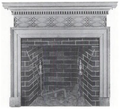
Historic Deerfield is a museum dedicated to the heritage and preservation of Deerfield, Massachusetts, and history of the Connecticut River Valley. Its historic houses, museums, and programs provide visitors with an understanding of New England's historic villages and countryside. It is located in the village of Old Deerfield which has been designated a National Historic Landmark District, and is listed on the National Register of Historic Places. The museum also hosts the Dublin Seminar for New England Folklife.

The Peabody Essex Museum (PEM) in Salem, Massachusetts, is a successor to the East India Marine Society, established in 1799. It combines the collections of the former Peabody Museum of Salem and the Essex Institute. PEM is the oldest continuously operating museum in the United States and holds one of the major collections of Asian art in the United States. Its total holdings include about 1.3 million pieces, as well as twenty-two historic buildings.

Stephen Carlton Clark was an American art collector, businessman, newspaper publisher and philanthropist. He founded the Baseball Hall of Fame in Cooperstown, New York.

The Fairbanks House in Dedham, Massachusetts is a historic house built ca. 1641, making it the oldest surviving timber-frame house in North America that has been verified by dendrochronology testing. Puritan settler Jonathan Fairbanks constructed the farm house for his wife Grace and their family. The house was occupied and then passed down through eight generations of the family until the early 20th century. Over several centuries the original portion was expanded as architectural styles changed and the family grew.

The Peabody Museum of Salem (1915–1992), formerly the Peabody Academy of Science (1865–1915), was a museum and antiquarian society based in Salem, Massachusetts. The academy was organized in part as a successor to the East India Marine Society, which had become moribund but held a large collection of maritime materials in a museum collection at the East India Marine Hall, built in 1825 on Essex Street. The Peabody Museum was merged with the Essex Institute to form the Peabody Essex Museum in 1992. The East India Marine Hall, now embedded within the latter's modern structure, was designated a National Historic Landmark in 1965 in recognition of this heritage, which represents the nation's oldest continuously-operating museum collection.

The East India Marine Society of Salem, Massachusetts, United States, was "composed of persons who have actually navigated the seas beyond the Cape of Good Hope or Cape Horn, as masters or supercargoes of vessels belonging to Salem." It functioned as a charitable and educational organization, and maintained a library and museum. It flourished especially in the 1800s–1830s, a heyday of foreign trade.

The Gardner–Pingree House is a historic house museum at 128 Essex Street in Salem, Massachusetts. It is judged to be a masterpiece of Federal architecture by the noted Salem builder Samuel McIntire, and was designated a National Historic Landmark in 1972 for its architectural significance. It is owned by the Peabody Essex Museum as part of its architectural collection, and is open to the public for guided tours.

The Dutton House is an exhibit building at Shelburne Museum in Shelburne, Vermont; it is also known as the Salmon Dutton House.

Stencil House, built in 1804 on one hundred-acre farm in Columbus, New York, was modeled after a Capen house, a small, side-gabled structure prevalent throughout the colonies in the 17th and 18th centuries. Named after Parson Joseph Capen of Topsfield, Massachusetts, who built one of the earliest such structures in 1692, Capen houses reflect the British influence on early Puritan architecture. The house is now an 18th-century period historic house museum located at the Shelburne Museum in Shelburne, Vermont.
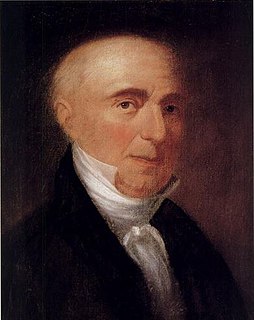
Michele Felice Cornè (1752–1845) was an artist born in Elba who settled in the United States. He lived in Salem and Boston, Massachusetts; and in Newport, Rhode Island. He painted marine scenes, portraits, and interior decorations such as fireboards and murals.
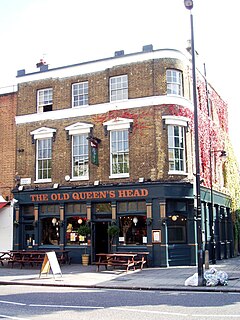
The Old Queen's Head is a pub on Essex Road in Islington, London N1. Its shopfront is scheduled as "to be retained" by Islington Council. Since 2006 The Old Queens Head has been a part of The Columbo Group, owned by Steve Ball and Riz Shaikh. It is a Grade II listed building.
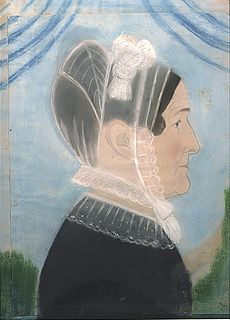
Ruth Henshaw Bascom, also known as Aunt Ruth, was an American folk artist who produced over 1,400 portraits. She was the daughter of Colonel William Henshaw and Phebe Swan of Leicester, Massachusetts and a schoolteacher from 1791 to 1801. Bascom married first, at about 32 years of age, to Dr. Asa Miles, but he died a year or more after their marriage. She married a second time for about 35 years to Reverend Ezekial Lysander Bascom. Bascom didn't give birth to children of her own, but she had a stepson from her first marriage, stepdaughter from her second marriage, and a niece and nephew that she raised. She documented the daily activities of her life in diaries beginning at the age of 17, which included records of the portraits that she made.
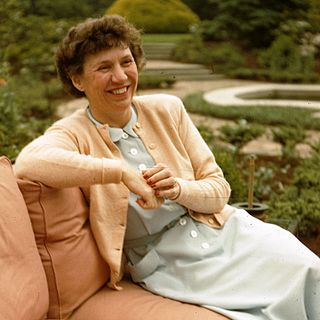
Pamela Cunningham Copeland was an American horticulturist and historical preservationist, known for her philanthropy. Her home and gardens became Mt. Cuba Center, a public garden and research center for Appalachian Piedmont flora that was added to the National Register of Historic Places in 2003.
John Orne Johnson Frost, who signed his work as J. O. J. Frost, was an early 20th century American folk artist. He began painting at the age of 70, without receiving any formal training. Frost considered himself a historian, not an artist, and his paintings portrayed daily life in the fishing village of Marblehead, Massachusetts, during the mid-19th century, as well as the town's colonial history.

George Ropes, Jr. (1788–1819) was an American artist, known for his maritime oil paintings.

